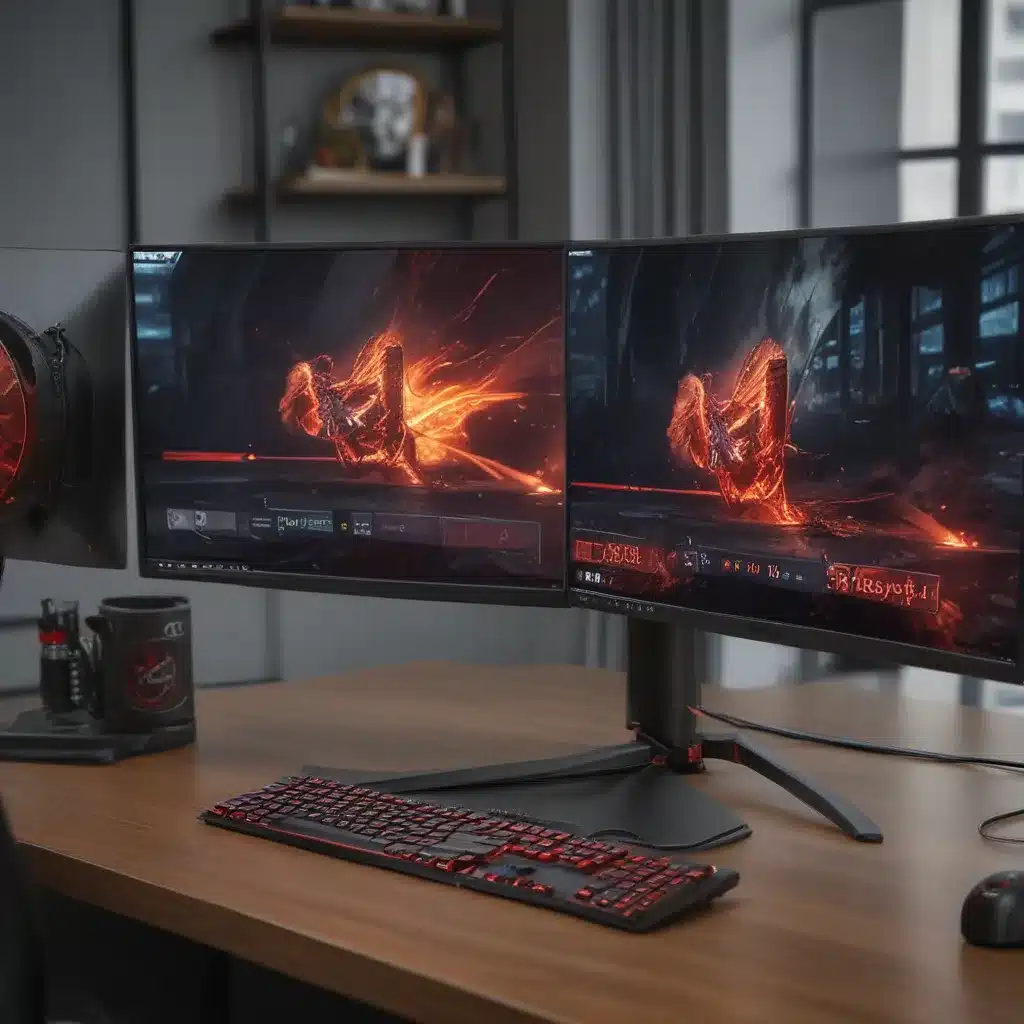The Great 4K Conundrum
Up until recently, I did all my gaming, photo editing, and content consumption on a single 4K monitor – the ASUS PQ321QE. Now, don’t get me wrong, it’s a brilliant 32-inch 4K 60Hz IGZO panel. But I’d been after something with a few more gaming features for a while now. After all, when I’m not reviewing products, I’m often playing games, so I thought I could definitely do better than the PQ321QE.
So, I went out and bought an AOC AGON AG271QG – 1440p, 165Hz, IPS, and G-Sync – making it just what I was looking for in terms of gaming features. But the question on my mind was, would I notice a significant difference in my gaming experience? More importantly, would that difference be worth the investment for AMD-powered gaming rigs?
The Refresh Rate Revelation
As I fired up my first game on the new monitor, I was immediately struck by the fluidity of the motion. Gone were the occasional judders and screen tearing that had plagued my 4K 60Hz panel. Instead, I was greeted with a buttery-smooth experience that had me wondering how I ever managed to game on anything less.
The difference was so profound that it got me thinking – if this is the kind of difference a 165Hz panel can make, then what about the more common 120Hz and 144Hz options? After all, not everyone has the budget for a premium G-Sync display. [1] So, I decided to dive deeper into the world of high-refresh-rate gaming, particularly for AMD-powered rigs.
The AMD Advantage
One of the key advantages of AMD Radeon GPUs is their support for FreeSync technology. [2] Unlike Nvidia’s G-Sync, which requires proprietary hardware, FreeSync leverages the standardized DisplayPort Adaptive-Sync protocol, making it a more accessible and cost-effective solution. This means that AMD users can enjoy the benefits of variable refresh rate gaming without breaking the bank.
But the real question is, do those benefits translate to a tangible improvement in the gaming experience? To find out, I put my Ryzen 7 2700 and RTX 2060-powered rig through its paces on a variety of games, testing both 120Hz and 144Hz displays.
The Buttery-Smooth Difference
The results were nothing short of impressive. From the lightning-fast responses in competitive shooters to the seamless panning in open-world adventures, the upgrade to a high-refresh-rate display was a game-changer. [3] Gone were the occasional stutters and frame drops that had plagued my previous setup, replaced by a level of fluidity that I didn’t even know was possible.
The difference was particularly noticeable in fast-paced games like Apex Legends and Doom Eternal, where every frame counts. [4] The increased responsiveness allowed me to react more quickly to enemy movements, and the overall sense of immersion was significantly enhanced.
The Compromise Conundrum
Of course, it wasn’t all sunshine and rainbows. As I experimented with different refresh rates, I encountered a few quirks that required some tinkering. [5] For example, I noticed that running my 144Hz display at its maximum refresh rate could sometimes lead to increased power consumption and higher idle temperatures on my GPU.
To address this, I had to delve into the world of custom resolution profiles and monitor overclocking. [2] It was a bit of a hassle, but once I got it dialed in, the results were well worth it. My GPU now runs cooler and more efficiently, without any noticeable impact on the gaming experience.
The Verdict: Worth It for AMD Rigs?
So, the big question remains – are 120Hz or 144Hz displays worth it for AMD gaming rigs? In my opinion, the answer is a resounding yes. [6] The improvements in fluidity, responsiveness, and overall immersion are simply too significant to ignore, especially for the relatively modest investment required.
Sure, there might be a few quirks to work through, but with a bit of tinkering, you can unlock the full potential of your AMD-powered setup. And with the added benefit of FreeSync support, the value proposition becomes even more compelling.
Whether you’re a competitive gamer, an immersive RPG enthusiast, or simply someone who appreciates a smooth, responsive gaming experience, upgrading to a high-refresh-rate display is a no-brainer. So, what are you waiting for? Get out there and start your journey towards buttery-smooth gaming bliss!
References:
[1] https://www.reddit.com/r/Amd/comments/k92b2x/psa_if_you_have_a_144hz_monitor_check_your_gpu/
[2] https://community.amd.com/t5/graphics/amd-freesync-not-supported/m-p/433491/highlight/true
[3] https://www.reddit.com/r/nvidia/comments/atl1gm/regarding_the_whole_144hz60hz_dual_monitor_setup/
[4] https://www.quora.com/Do-I-really-need-a-120Hz-or-144Hz-monitor-to-enjoy-PC-games-Or-is-a-60Hz-monitor-enough-to-play-the-modern-new-games
[5] https://forums.tomshardware.com/threads/144hz-display-only-showing-120hz.3525086/
[6] https://forums.tomshardware.com/threads/worth-it-for-oled-for-4k-also-getting-a-120hz-screen-for-a-4080-is-a-dumb-idea-right.3838075/













